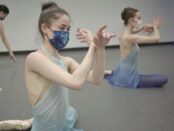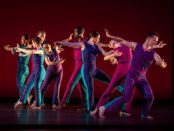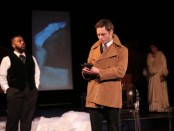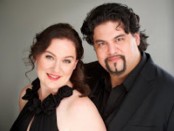New Chamber Ballet: “Sea” & “Sun”
“Sea,” according to Magloire’s program notes is “loosely inspired by the movement of waves.” Five dancers—Anabel Alpert, Megan Foley, Amber Neff, Rachele Perla and Alison Tatsuoka-dressed in Sarah Thea’s beautifully flowing blue costumes, certainly moved in ways that were wavelike, but they also seemed to be performing a constantly shifting ritual that eased from quietly intense to agitated and back—from languor to vigor. [more]





